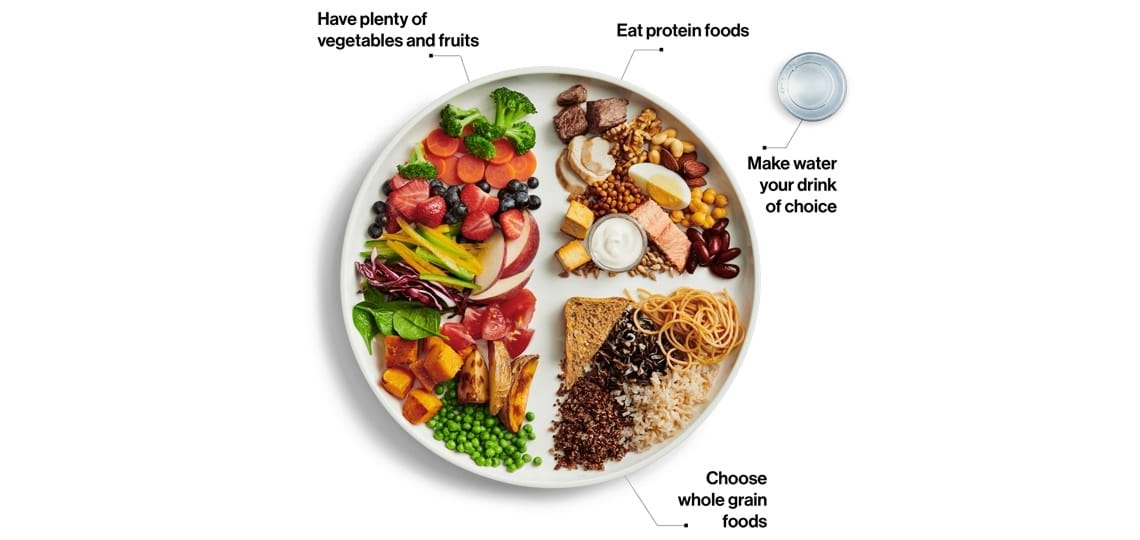The original Canada Food Guide was created in 1942 to provide guidance on proper nutrition during a period when wartime rations were common, and so was malnourishment. Over the years, tweaks and changes have been made to reflect modern day, but our situation has no doubt changed since the guide was first created.
The updated Canada Food Guide was released in January 2019 and it’s a drastic overhaul from previous Guides. With a focus on the ‘how’ of eating, the Guide encourages Canadians to be mindful of food advertising, to make their own meals more often and to practice mindful eating, all to encourage a healthier lifestyle.
We’ve outlined the changes below.
Illustrations and the four food groups
The new image of a plate with real food represents a significant departure from any of the previous illustrations used. In previous food guides, images have always been illustrated – which may not have resonated with Canadians.
In addition to this, there’s less talk about the four food groups. Instead, there’s an emphasis on the health value of foods and what a balanced meal might look like.

Water is the beverage of choice
There fruit juice in the newest version of the guide, which now describes water as the ‘beverage of choice’ and warns of the sugar content of other drinks.
This was a necessary and refreshing change as fruit juice is low in fibre and full of sugar. It’s fine to drink occasionally, but should not be recognized as a healthy or primary beverage. Milk is an OK option for some who digest it well, but it is not a requirement for calcium intake or a healthy diet. Other sources such as broccoli, chia and sesame seeds, canned fish, white beans, edamame, tofu and other fortified foods can provide ample calcium as well.
Produce – Both fresh and frozen
The produce section does include frozen peas and carrots, as well as canned tomatoes. These were added to show acceptance of frozen and canned vegetables for those shopping on a lower budget. Some frozen foods contain high levels of nutrients as they are flash frozen at harvest, so they haven’t lost any nutritional value during transport and storage.
There is a lot of talk about organic food and fresh fruits and vegetables these days, but this isn’t an option for everyone. Consuming (BPA free) canned produce for a family that wasn’t consuming nearly any produce before is a hugely positive move that should be commended.
Protein
Much of the protein section is taken up by beans, nuts and pulses, with some space occupied by chicken, beef, fish and dairy.
There has been some confusion with people thinking the Food Guide is promoting a vegetarian or vegan lifestyle. This is not the case. The recommendations simply suggest that there are other ways to get sufficient protein intake other than meat.
Animal proteins do have a complete amino acid profile and are certainly a fantastic way of getting ample protein, iron and some B vitamins. However, not all animal products are of high quality and replacing a few meals a week with alternative forms of protein is a great way to improve overall health. Beans and legumes are also lower in cost than most animal-based foods, so including more of these is a great budget-friendly option.
